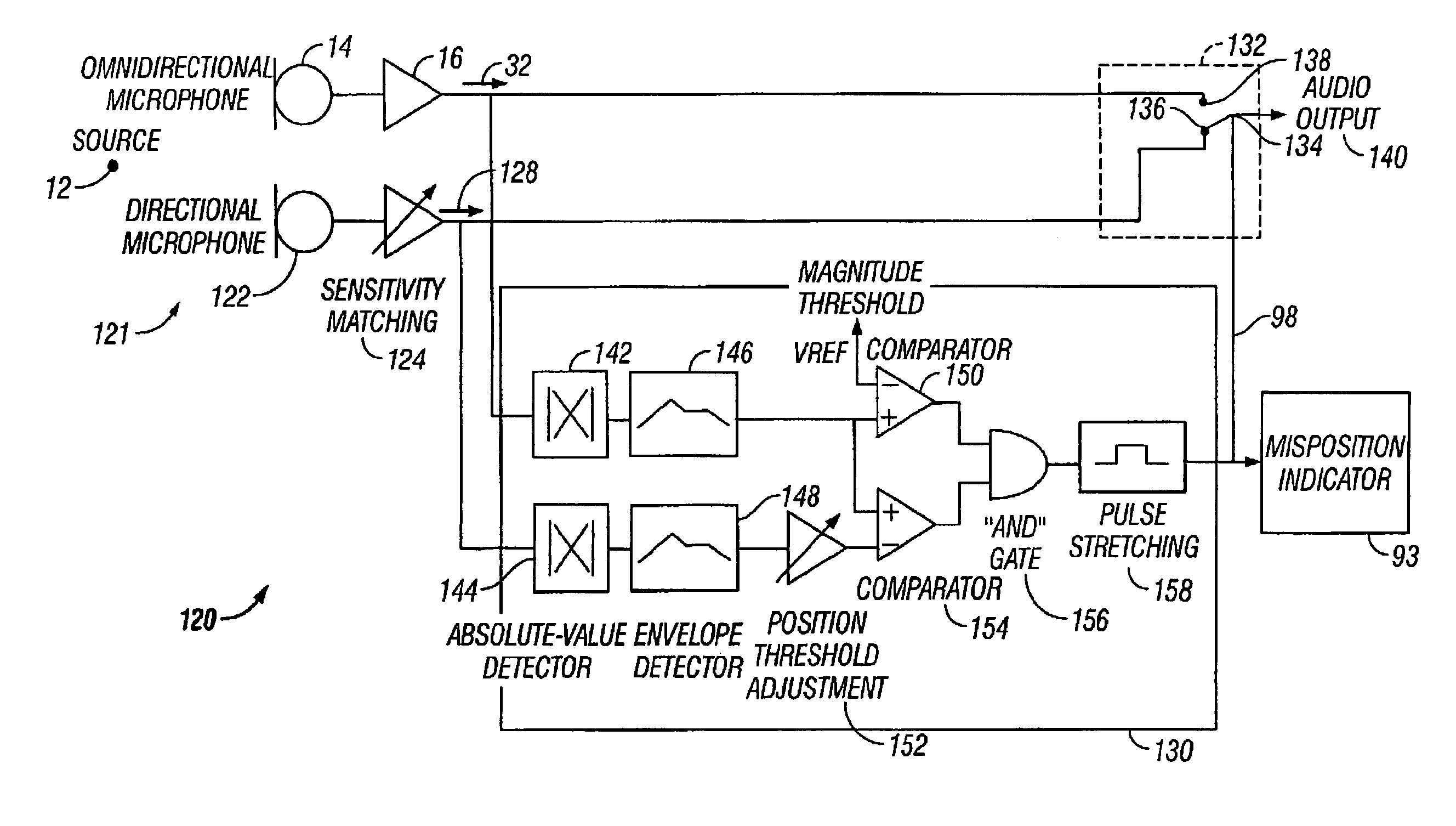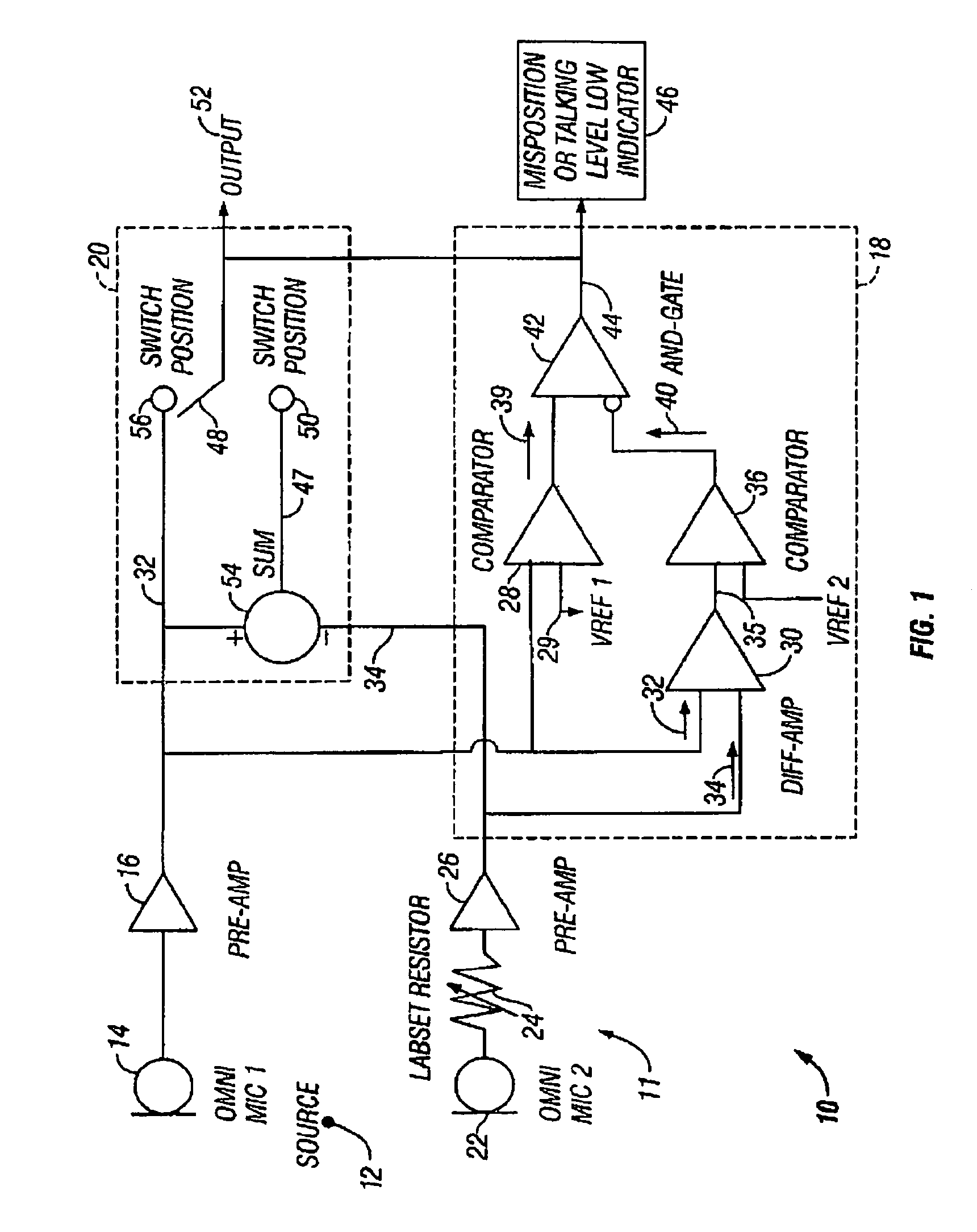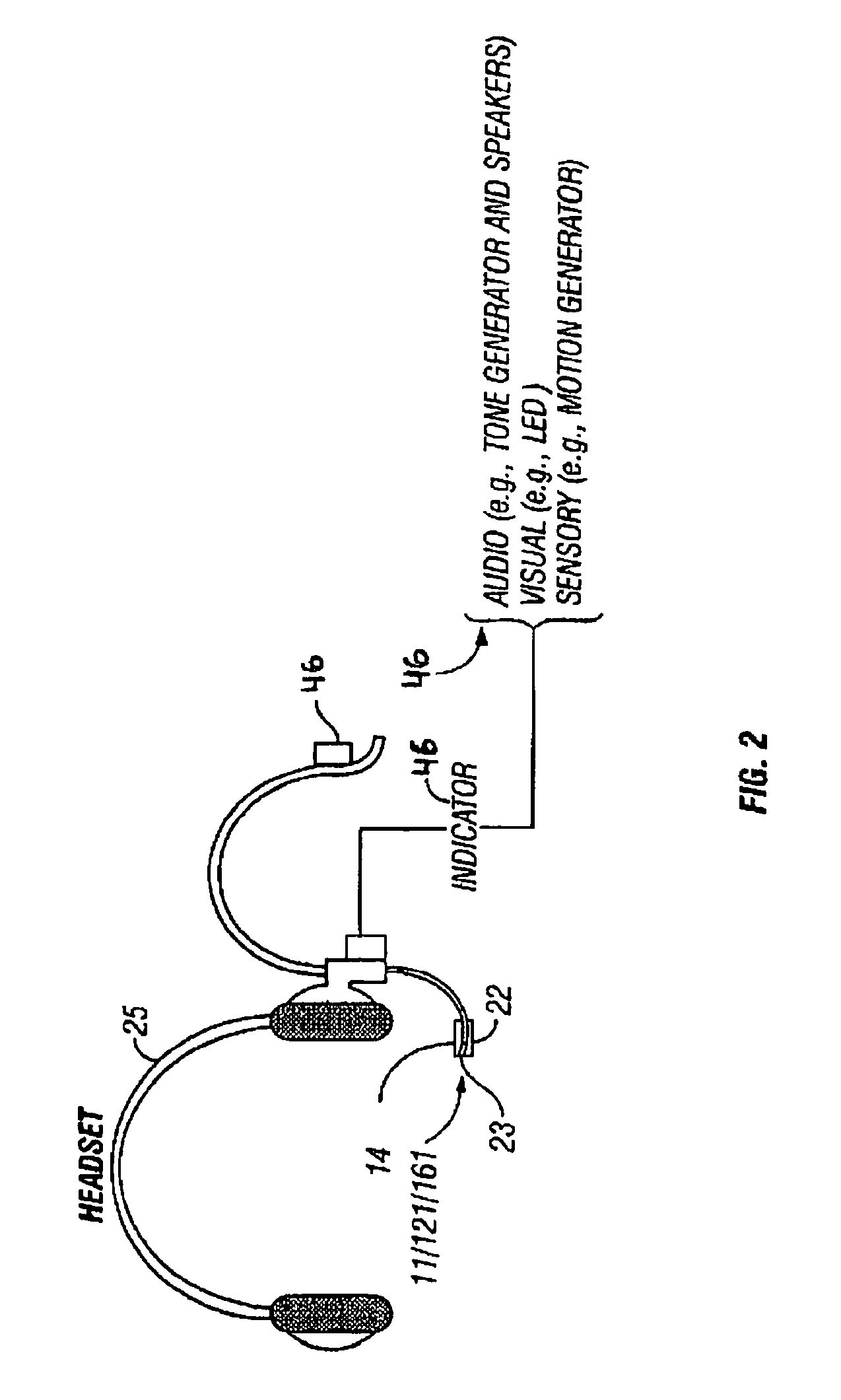Auto-adjust noise canceling microphone with position sensor
- Summary
- Abstract
- Description
- Claims
- Application Information
AI Technical Summary
Benefits of technology
Problems solved by technology
Method used
Image
Examples
Example
[0059]FIG. 5 illustrates a third embodiment of the present invention. Here, a microphone proximity correction system 120 includes a microphone assembly 121 comprising a first microphone 14 receiving acoustical signals from an acoustic source 12 and coupled to a pre-amplifier 16. Microphone assembly 121 further includes a second microphone 122 coupled to a sensitivity matching circuit 124. The sensitivity matching circuit 124 matches the microphones 14 and 122 according to a standard output, so that noise canceling characteristics may be facilitated. The first microphone 14 is an omnidirectional pick-up microphone as previously described, and the second microphone 122 is a directional NC microphone.
[0060]Noise canceling effects may be derived from a single microphone for the second microphone 122. In order to do so, the pair of pick-up points for a single microphone may comprise two openings (orifices) closely spaced together similar to how microphones 14 and 22 have been described. ...
Example
[0071]FIG. 6 illustrates a fourth embodiment of the present invention. Here, a microphone proximity correction system 160 includes a microphone apparatus 161. Microphone apparatus 161 is similar to microphone apparatus 11, and includes: a first microphone 14 receiving acoustical signals from an acoustic source 12 and coupled to a pre-amplifier 16; and a second microphone 22 coupled to a sensitivity matching circuit 125. The sensitivity matching circuit 125 is similar to sensitivity matching circuit 124 and to the function of the Labset resistor 24 and pre-amplifier 16 of FIG. 1. In general, sensitivity matching circuit 125 matches the microphones 14 and 22 according to a standard output, so that noise canceling characteristics may be facilitated.
[0072]The first and second microphones 14 and 22 omnidirectional pick-up microphones as previously described. Microphone 14 generates a signal 32 and microphone 22 generates signal 34, similar to that described with the embodiment of FIG. 1....
Example
[0082]FIG. 7 illustrates a fifth embodiment of the present invention. Here, selected components of system 170 are similar to that of systems 120 and 160 in FIGS. 5-6, respectively, and to that end, like reference numerals have been included for convenience. System 170 also includes a controller 138 coupled to a position estimation circuit 172.
[0083]Position estimation circuit 172 includes, as previously described: first and second absolute value detectors 142 and 144; envelope detectors 146 and 148; a position threshold adjustment unit 152; comparators 150 and 154; and AND gate 156. Additionally, position estimation circuit 172 includes an inverter 174 coupled to comparator 154, AND gate 156 and a pulse stretching unit 176. Pulse stretching unit 176 includes a reset circuit with function that is invoked when the microphone assembly 161 is properly positioned relative to acoustic source 12. Pulse stretching is reset when NC mic assembly 161 is positioned properly so that switch 134 i...
PUM
 Login to View More
Login to View More Abstract
Description
Claims
Application Information
 Login to View More
Login to View More - R&D
- Intellectual Property
- Life Sciences
- Materials
- Tech Scout
- Unparalleled Data Quality
- Higher Quality Content
- 60% Fewer Hallucinations
Browse by: Latest US Patents, China's latest patents, Technical Efficacy Thesaurus, Application Domain, Technology Topic, Popular Technical Reports.
© 2025 PatSnap. All rights reserved.Legal|Privacy policy|Modern Slavery Act Transparency Statement|Sitemap|About US| Contact US: help@patsnap.com



